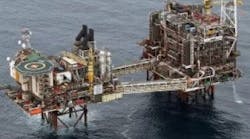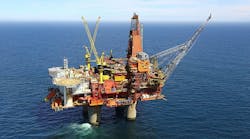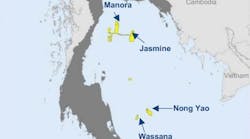Offshore staff
DUBLIN, Ireland – Clontarf Energy has issued details of prospective targets in block 18 offshore Equatorial Guinea, which the company was awarded under the country’s 2017 Bid Round.
The concession extends more than 5,056 sq km (1,952 sq mi) of undrilled deepwater acreage with various play types. Clontarf’s focus will be on developing large structural and/or stratigraphic trap targets.
The main amplitude anomaly trend is around 220 sq km (85 sq mi), and approaches that have worked in nearby offshore provinces could also pay off, particularly in ‘mid-Cretaceous intervals’ aged between 94 million years and 72 million years: across block 18 these appear to feature meandering sand deposits.
Initial seismic interpretation suggests a prime play could be confined turbidite channels and distal fans sealed by up-dip pinch-outs, similar to play types elsewhere on the ‘Atlantic Transform Margin’ in Cretaceous sands.
Water depths on the block are roughly 1,800 m (5,905 ft), but the company points out that drilling costs since 2014 have come down by around 70%, and conditions are relatively benign compared to areas of comparable depth further away from the Equator.
In Ghana, the new NPP government is reviewing historic petroleum agreements, with a stated focus on encouraging early development.
The Ghanaian Ministry of Energy and the Ghanaian National Petroleum Commission are considering the current re-application by Pan Andean Resources Ltd. (30% Petrel, 60% Clontarf, 10% local interests) over a license block in the prospectiveoffshore Tano basin.
Clontarf’s preference is to stick where possible to terms of the existing signed petroleum agreement, with fine-tuning where necessary.
09/22/2017




